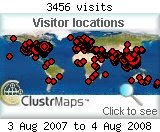By Jeannette Andrade
Philippine Daily Inquirer
First Posted 06:14:00 03/04/2008
MANILA, Philippines -- Even if a two-child policy is enforced by 2010, the Philippine population is expected to reach 150 million because the poor lack information and access to family planning services, according to a nonprofit organization based in Berkeley, California.
"Even if the country reached replacement level fertility (prescribed number of children per family) by 2010, the ultimate population of the Philippines would be 150 million people," said Martha Madison Campbell, founder president of Venture Strategies for Health Development.
According to its website, Venture Strategies is a nonprofit organization dedicated to improving the health of low-income people in developing countries by using business mechanisms and building on the power of local market forces.
"There is no time to waste to ensure that the country has enough land for growing food for today's families and also to have remaining forests for tomorrow's children," Campbell said Monday at a press conference at Sulo Hotel to announce the Third National Conference on Population, Health and the Environment to be held in Tagaytay City on March 5-7.
She warned that unless the country gave greater emphasis to family planning, there was a danger of increasing poverty. "Poor people have big families [not] because they want to but because the poor have no access to contraceptives and health education."
She said United Nations demographers in 2002 projected that the Philippine population would reach between 75 and 85 million. But the population overshot the high projection and now stands at 89 million.
Faster than expected
What the figures show, Campbell stressed, "is population growth is faster that anyone expected."
"If there is another delay... if the Philippines waits another 40 years before reaching an average of two children per family, that will mean 100 million more people living in these beautiful islands [compared to] if every family [would] have only two children two years from now," said the political scientist and health specialist from the University of California.
She said that in the 1960s, Thailand and the Philippines each had a population of some 20 million people. Today Thailand has 66 million people compared to the Philippines' 89 million.
"In Thailand, where there is access to contraception, uneducated women use family planning methods just like women with a college education. In the Philippines, where there is no clear national government support for a family planning program, contraceptive use is less -- especially among poor and uneducated women, leading to more unintended pregnancies and larger families," Campbell said.
Risks
International Programs Director Richard Skolnik of the Washington-based Population Reference Bureau said there were many environmental risks to health due to increasing pressure that population growth and migration to cities put on the environment.
"These problems are best seen in the large number of Filipinos who still lack access to safe water and sanitation and who are subjected to indoor and outdoor air pollution," Skolnik said, adding that diarrhea and respiratory infections, especially among poor children, made up 20 percent of the causes of death in the country.
Philippine Legislators Committee on Population and Development (PLCPD) executive director Ramon San Pascual said the impact of population growth on the environment cannot be ignored. "A law on population management and reproductive health is urgently needed."
For his part, Conservation International-Philippines country executive director Romeo Trono said: "The question is not what needs to be done, but whether or not government units and agencies, the business sector, support agencies and communities will actually do it with a serious sense of urgency as high priority is required."
Philippine Daily Inquirer
First Posted 06:14:00 03/04/2008
MANILA, Philippines -- Even if a two-child policy is enforced by 2010, the Philippine population is expected to reach 150 million because the poor lack information and access to family planning services, according to a nonprofit organization based in Berkeley, California.
"Even if the country reached replacement level fertility (prescribed number of children per family) by 2010, the ultimate population of the Philippines would be 150 million people," said Martha Madison Campbell, founder president of Venture Strategies for Health Development.
According to its website, Venture Strategies is a nonprofit organization dedicated to improving the health of low-income people in developing countries by using business mechanisms and building on the power of local market forces.
"There is no time to waste to ensure that the country has enough land for growing food for today's families and also to have remaining forests for tomorrow's children," Campbell said Monday at a press conference at Sulo Hotel to announce the Third National Conference on Population, Health and the Environment to be held in Tagaytay City on March 5-7.
She warned that unless the country gave greater emphasis to family planning, there was a danger of increasing poverty. "Poor people have big families [not] because they want to but because the poor have no access to contraceptives and health education."
She said United Nations demographers in 2002 projected that the Philippine population would reach between 75 and 85 million. But the population overshot the high projection and now stands at 89 million.
Faster than expected
What the figures show, Campbell stressed, "is population growth is faster that anyone expected."
"If there is another delay... if the Philippines waits another 40 years before reaching an average of two children per family, that will mean 100 million more people living in these beautiful islands [compared to] if every family [would] have only two children two years from now," said the political scientist and health specialist from the University of California.
She said that in the 1960s, Thailand and the Philippines each had a population of some 20 million people. Today Thailand has 66 million people compared to the Philippines' 89 million.
"In Thailand, where there is access to contraception, uneducated women use family planning methods just like women with a college education. In the Philippines, where there is no clear national government support for a family planning program, contraceptive use is less -- especially among poor and uneducated women, leading to more unintended pregnancies and larger families," Campbell said.
Risks
International Programs Director Richard Skolnik of the Washington-based Population Reference Bureau said there were many environmental risks to health due to increasing pressure that population growth and migration to cities put on the environment.
"These problems are best seen in the large number of Filipinos who still lack access to safe water and sanitation and who are subjected to indoor and outdoor air pollution," Skolnik said, adding that diarrhea and respiratory infections, especially among poor children, made up 20 percent of the causes of death in the country.
Philippine Legislators Committee on Population and Development (PLCPD) executive director Ramon San Pascual said the impact of population growth on the environment cannot be ignored. "A law on population management and reproductive health is urgently needed."
For his part, Conservation International-Philippines country executive director Romeo Trono said: "The question is not what needs to be done, but whether or not government units and agencies, the business sector, support agencies and communities will actually do it with a serious sense of urgency as high priority is required."













0 comments:
Post a Comment